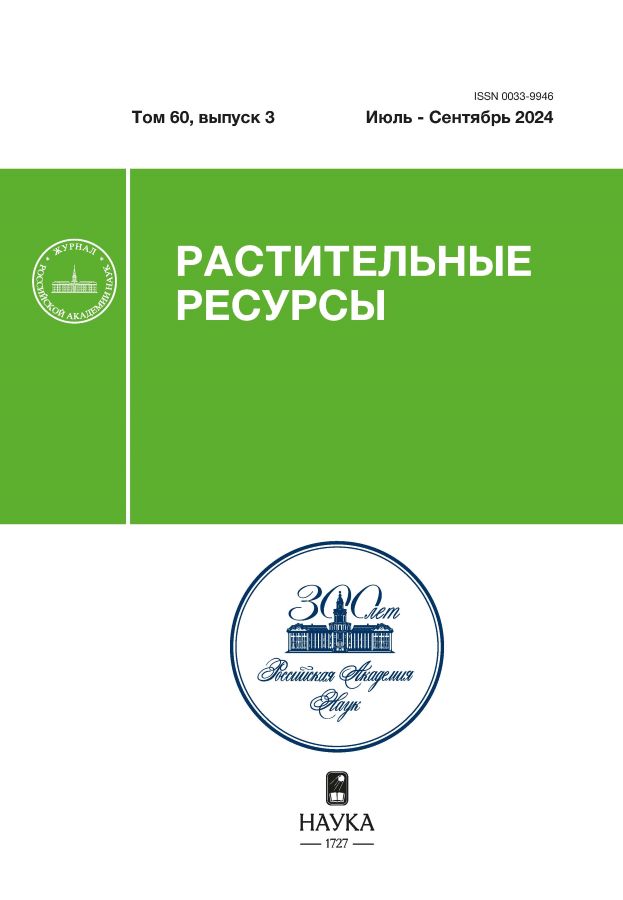Old-growth oaks (Quercus robur) on the northern coast of the Gulf of Finland near St. Petersburg
- Авторлар: Firsov G.A.1, Yarmishko V.T.1, Khmarik A.G.1
-
Мекемелер:
- V.L. Komarov Botanical Institute of the Russian Academy of Sciences
- Шығарылым: Том 60, № 3 (2024)
- Беттер: 80-87
- Бөлім: Biology of Resource Species
- URL: https://ruspoj.com/0033-9946/article/view/674402
- DOI: https://doi.org/10.31857/S0033994624030057
- EDN: https://elibrary.ru/PTWCGB
- ID: 674402
Дәйексөз келтіру
Аннотация
Near St. Petersburg, on the northern coast of the Gulf of Finland, very old and large oak trees (Quercus robur L.) are still growing in the forest at the northern limit of their natural range. Among the many oaks surveyed, one that grows near the town of Lisy Nos, stands out for its might and beauty. It is 25.0 m high, with a trunk of 166 cm in diameter, and mighty spreading crown reaching a diameter of 25 m. A visual assessment of the aboveground organs of a woody plant (trunk, crown, buttresses) suggested that this oak is in its natural state. Its age was estimated to be about 450 years. It can be assumed that when St. Petersburg was founded, it was already a fairly large tree over a hundred years old. Studies of dendrochronological series for 1827–2023 revealed a fairly high variability in the annual rings width with a disruption of cyclicity and a general tendency to gradual decrease in the intensity of radial growth. Floods, the proximity of groundwater and other environmental factors directly or indirectly affect the condition of trees in the coastal zone. It is very important to preserve for future generations such ancient, veteran and historical trees as English oak.
Негізгі сөздер
Толық мәтін
Авторлар туралы
G. Firsov
V.L. Komarov Botanical Institute of the Russian Academy of Sciences
Хат алмасуға жауапты Автор.
Email: gennady_firsov@mail.ru
Ресей, St. Petersburg
V. Yarmishko
V.L. Komarov Botanical Institute of the Russian Academy of Sciences
Email: gennady_firsov@mail.ru
Ресей, St. Petersburg
A. Khmarik
V.L. Komarov Botanical Institute of the Russian Academy of Sciences
Email: gennady_firsov@mail.ru
Ресей, St. Petersburg
Әдебиет тізімі
- Tsvelev N. N. 2000. [Determinant of vascular plants of the Northwestern Russia (Leningrad, Pskov and Novgorod Regions)]. St. Petersburg. 781 p. (In Russian)
- Malysheva N. V., Nikolaev P. M., Reyman A. L., Neshataev V. Yu. 1995. [The history of foundation and the current state of the Sestroretsk Park "Dubki" (based on lichenoindication, phytopathological and phytocenotic analyses)]. — Bulletin of St. Petersburg State University. Ser. 3. 2(10): 46–51. (In Russian)
- Firsov G. A., Byalt V. V., Khmarik A. G. 2020. [Trees and shrubs of Park Dubki (St. Petersburg, Russia)]. Moscow. 96 p. https://www.binran.ru/files/publications/monographs/Trees_and_shrubs_of_Dubki_Park_2020.pdf (In Russian)
- Firsov G. A., Yarmishko V. T. 2023. Trees and shrubs of Peter the Great Botanical Garden. Volume 1. Gymnosperm plants. St. Petersburg. 206 p. https://www.binran.ru/files/publications/monographs/Trees_and_shrubs_of_Peter_the_Great_Botanical_Garden_1.pdf (In Russian)
- Lapin P. I. 1967. [Seasonal rhythm of woody plants development and its importance for introduction]. — Bulletin of the Main Botanical Garden of the USSR Academy of Sciences. 65: 13–18. https://www.gbsad.ru/doc/biulleten_gbs_1967_065.pdf (In Russian)
- Ukraintseva V. V., Reiman A. L., Arslanov H. A., Kultin N. B., Levina I. D. 2001. [Geobotanical study of estate of Peter I's "Blizhniye Dubki" (1723–1737)]. — Izvestiya RAN. Geographical Series. 2: 96–102. (In Russian)
- Rumyantsev D. E. 2010. [History and methodology of silvicultural dendrochronology]. M. 109 p. (In Russian)
- Usoltsev D. V., Vorobeychik E. L., Bergman I. E., Urazova A. F. 2012. Biological productivity of Ural forests under conditions of air pollutions: an investigation of a system and regualrities. Yekaterinburg. 366 p. https://elar.usfeu.ru/handle/123456789/458 (In Russian)
- Amineva K. Z., Urazgildin R. V., Kulagin A. Yu. 2014. Radial increment of pedunculate oak (Quercus robur L.) under anthropogenic pollution. Biosfera. 6(4): 388–399. https://doi.org/10.24855/biosfera.v6i4.184 (In Russian)
- Dervien A. F. 1875. [Twenty-five Pressler formulas for calculating tree growth and forest growth drill]. St. Petersburg. 92 p. (In Russian)
- Vedenyapina E. G., Volchanskaya A. V., Lavrentiev N. V., Firsov G. A. 2015. [English oak (Quercus robur L.) in the Botanical Garden of the Komarov Botanical Institute of the Russian Academy of sciences]. — Bulletin of Udmurt University. Ser. Biology. Earth Sciences. 25(2): 43–50. https://journals.udsu.ru/biology/article/view/2883 (In Russian)
- Firsov G. A., Yarmishko V. T., Khmarik A. G. 2022. [Century-old trees of Peter the Great Botanical Garden]. Moscow. 216 p. https://www.binran.ru/files/publications/monographs/Centuries-old_trees_of_Botanical_Garden_of_Peter_the_Great_2022.pdf (In Russian)
- Svyazeva O. A. 2005. [Trees, shrubs and lianas of the Park of the Botanical Garden of the V.L. Komarov Botanical Institute (on the history of introduction to culture)]. St. Petersburg. 384 p. (In Russian)
- Firsov G. A., Volchanskaya A. V. 2021. [Woody plants in conditions of climatic changes at St. Petersburg]. Moscow. 128 p. https://www.binran.ru/files/publications/monographs/Woody_plants_in_climate_change_conditions_in_SPb.pdf (In Russian)
- Firsov G. A., Volchanskaya A. V. 2012. Meteorological conditions in 2009-2011 and arborous aliens of St. Petersburg. — Science review: Theory and Practice. 3: 41–48. (In Russian)
- Vedenyapina E. G., Firsov G. A., Volchanskaya A. V., Vorobyov N. I. 2014. [Soil-borne Phytophthora species in the Botanical Garden of RAS. II. The results of 2-years monitoring]. — Mycologiya i Fitopatologiya. 48(5): 322–332. https://elibrary.ru/item.asp?id=22307866 (In Russian)
- Firsov G. A., Vedenyapina E. G., Volchanskaya A. V. 2014. [Soil-borne phytophthoras and woody plants in St. Petersburg: new threats of the third millennium]. — Hortus Botanicus. 9: 18–35. https://doi.org/10.15393/j4.art.2014.2101 (In Russian).
Қосымша файлдар









